
|
Tips & Recipes For Successful Dehydrating
by Alice Osborne
 It’s harvest time and folks are busy canning, freezing and dehydrating. We’ve been fascinated with dehydrating for a long time and thought you might appreciate some tips on how to dry food successfully. We are also including some great recipes for use of some popular dehydrated fruits and veggies:
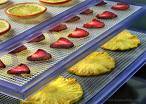 First, it’s good to know that fruits are easier to dry than vegetables because moisture evaporates wore easily, and not as much moisture must be removed for the product to keep. Ripe apples, berries, cherries, peaches, apricots, and pears are practical to dry.
 Vegetables that are also practical to dry include peas, corn, peppers, zucchini, okra, onions, and green beans. Produce from the supermarket is usually more expensive and not as fresh as it should be for drying. It is a waste of time and energy to dry vegetables such as carrots that can be kept for several months in a cool, dry basement or cellar.
Fresh herbs of all types are suitable for drying. The parts of the plant to dry vary, but leaves, seeds, or blossoms usually give the best results.
 Lean meats such as beef, lamb, and venison can be dried for jerky. Fish also is excellent when dried. Certain foods are not suitable for drying because of their high moisture content. Lettuce, melons, and cucumbers are a few foods that do not dry well.
Don't be surprised to find a variety of suggestions for drying methods, temperatures, and lengths of time. The drying process is simply not as precise as canning and freezing because it involves so many different factors. You may need to use a trial-and-error approach to find what suits you best. Whatever method you use, be sure to remove enough moisture from the final product so that spoilage organisms cannot grow.
When you dry foods, remember the following:
Cleanliness and sanitation are essential.
The flavor of dried fruits and vegetables will be somewhat different from that of their fresh, canned, or frozen counterparts.
Fruit Drying Guide: All fruit should be washed, pitted and sliced. Arrange in single layers on trays. Dry fruit at 135°F. You may wish to pre-treat your fruit with lemon juice or ascorbic acid or it won't darken while you are preparing it for drying. Just slice the fruit into the solution and soak for 5 minutes.
Apples: Peel, core and slice into 3/8-inch rings, or cut into 1/4-inch slices. Pre-treat and dry 6-12 hours until pliable.
Apricots: Cut in half and turn inside out to dry. Pre-treat and dry 8-20 hours until pliable.
Bananas: Peel, cut into 1/4-inch slices and pre-treat. Dry 8-16 hours until pliable or almost crisp.
Blueberries: Dry 10-20 hours until leathery.
Cherries: Cut in half and dry 18-26 hours until leathery and slightly sticky.
Peaches: Peel, halve or quarter. Pre-treat and dry 6-20 hours until pliable.
Pears: Peel, cut into 1/4-inch slices, and pre-treat. Dry 6-20 hours until leathery.
Pineapple: Core and slice 1/4-inch thick. Dry 6-16 hours until leathery and not sticky.
Strawberries: Halve or cut into 1/4-inch thick slices. Dry 6-16 hours until pliable and almost crisp.
 Fruit Leathers: It is easy to make if you have a blender or food processor. The fruit leather is like a "fruit roll-up" and is made out of pureed fruit. Applesauce works great for fruit leather since it is already in puree form. Overripe fruits can also be used since these are easily pureed. For an added flare, you can add coconut, raisins, poppy seeds, sesame seeds, or sunflower seeds to the fruit leather. If you add any type of garnish to your fruit leather however, you will have to store them in the freezer or refrigerator. Otherwise, you can store fruit leather in an airtight container. Just roll up the fruit leather into a roll after it has dried, wrap in plastic, and store them altogether in an appropriate container. Fruit Leathers: It is easy to make if you have a blender or food processor. The fruit leather is like a "fruit roll-up" and is made out of pureed fruit. Applesauce works great for fruit leather since it is already in puree form. Overripe fruits can also be used since these are easily pureed. For an added flare, you can add coconut, raisins, poppy seeds, sesame seeds, or sunflower seeds to the fruit leather. If you add any type of garnish to your fruit leather however, you will have to store them in the freezer or refrigerator. Otherwise, you can store fruit leather in an airtight container. Just roll up the fruit leather into a roll after it has dried, wrap in plastic, and store them altogether in an appropriate container.
To make fruit leather, puree your fruit. Apples, pears, peaches, and nectarines should be cooked before pureeing. Pour the fruit puree about 1/4-inch deep on special fruit leather drying sheets, or drying trays that have been lined with plastic wrap. Since the center does not dry as quickly as the edges, Only pour the puree 1/8-inch deep towards the center. Dry at 135°F pliable and leathery. The center should also be dry and have no wet or sticky spots.
Recipes Using Dried Foods:
Apple Pie
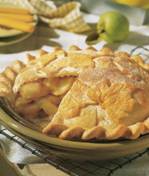 3 ½ C. dried apples 3 ½ C. dried apples
2 C. water
¾ C. sugar
1 t. cinnamon
Cook apples until tender. The apples wil rehydrate during the cooking and baking process. Add sugar and cinnamon. Fill and top with pie crust and bake 30 minutes at 350 degrees.
 Download this recipe.
Cherry Pie Download this recipe.
Cherry Pie
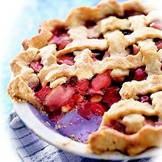 3 C. dried cherries
3 C. boiling water
1/2 C. flour
1 C. sugar
Cover cherries with water and let soak for 30 minutes. Simmer and add sugar and flour to thicken. Pour into pie crust and add top crust. Bake at 400 degrees for about 35 minutes.
 Download this recipe.
Peach Pie Download this recipe.
Peach Pie
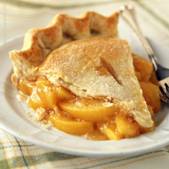 3 C. dried peaches
3 C. boiling water
2/3 C. flour
1 C. sugar
2 t. cinnamon
1/4 t. nutmeg
Cover fruit with water and let soak for 30 minutes. Simmer and add sugar, spices and flour to thicken. Pour into pie crust, dot with butter, and cover with pie top. Bake at 400 degress for 30 minutes.
 Download this recipe.
Creamed Corn Download this recipe.
Creamed Corn
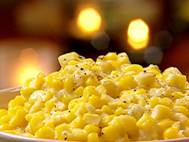 1 C. dried corn
4 C. boiling water
2 t. sugar
1/2 C. milk
1 T. flour
1 T. margarine
salt and pepper to taste
Add corn to water and let stand for 30 minutes. Simmer corn until tender. This may take as long as an hour or so. Drain and add remaining ingredients. Simmer for an additional 5 minutes, stirring frequently to prevent scorching.
 Download this recipe.
Grean Bean Casserole Download this recipe.
Grean Bean Casserole
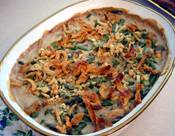 2 C. boiling water
1 C. dried beans
1 can cream of mushroom soup
Add beans to water and cook until tender. Add soup and simmer. Optional: top with French Fried onions and cooked and drained bacon pieces.
 Download this recipe.
Cream of Tomato Soup Download this recipe.
Cream of Tomato Soup
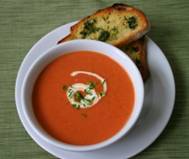 1 t. Dried Tomato powder
1/2 C. boiling water
1 T. flour
1/2 C. milk
To make tomato powder, blend dried tomatoes in food processor. Add powder to water and simmer. Add flour to milk and stir. Add flour/milk mixture to water and tomatoes. Simmer and stir to prevent scorching.
 Download this recipe.
Cooked Fruit Download this recipe.
Cooked Fruit
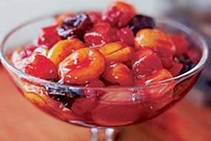 3 C. dried fruit of your choice
2 C. boiling water
1 t. cinnamon
Sugar to taste
Let fruit soak in the boiled water for 20 minutes. Simmer for another 20 minutes and add cinnamon and sugar. Stir until sugar is dissolved and serve.
 Download this recipe.
Hearty Vegetable Soup Download this recipe.
Hearty Vegetable Soup
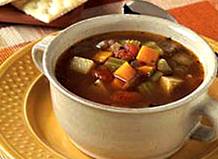 1 C. diced cooked meat
3 C. dried mixed vegetables
salt and pepper
Cover dried vegetables with boiling water and soak 1 hour, then simmer for 2 hours or until tender. Remember you can add fresh vegetables, in case you don't have a particular dried one, to the pot as well.
 Download this recipe. Download this recipe.
Contribute to the Cook'n Club!
DVO would love to publish your article, prose, photography and art as well as your cooking, kitchen and nutrition tips, tricks and secrets. Visit the Newsletter Submission / Win Win for All section in our Forum for more information and details.
|
|


